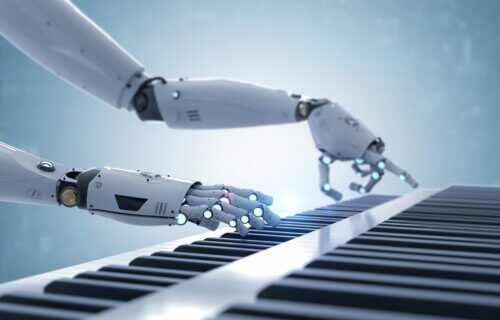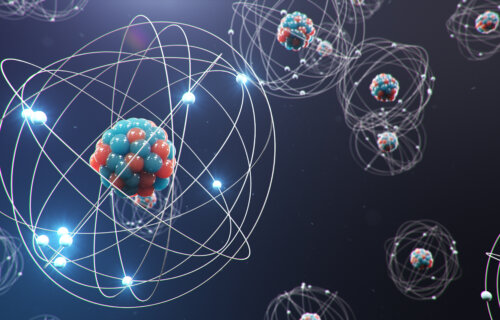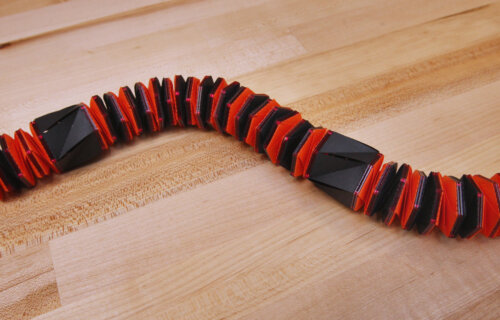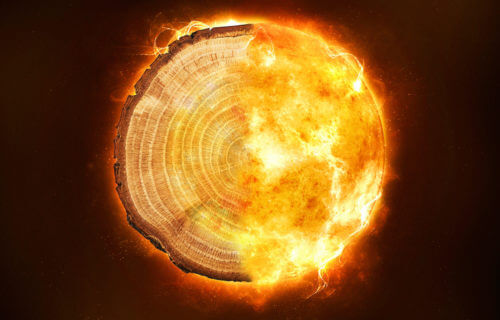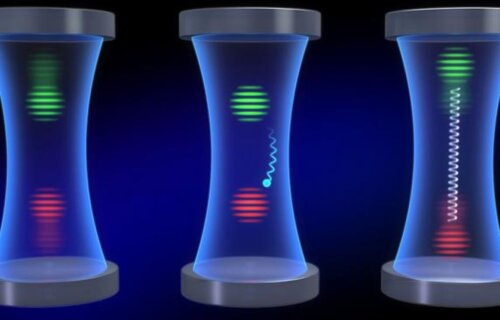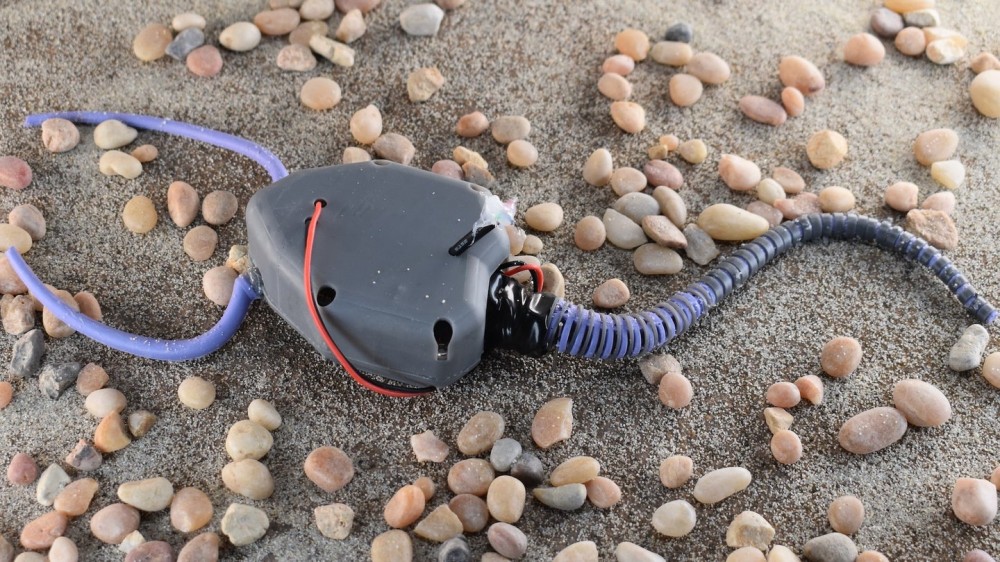
Plenty of robots are inspired by existing animals, but not as many take their cue from extinct creatures. To design their own new machine, Carnegie Mellon University researchers looked over 500-million years back in time for guidance. Their result, presented during the 68th Biophysical Society Annual Meeting, is an underwater soft robot modeled after one of the sea urchin’s oldest ancestors.
[Related: Watch robot dogs train on obstacle courses to avoid tripping.]
Pleurocystitids swam the oceans around half a billion years ago—about the same time experts now believe jellyfish first appeared. While an ancient precursor to invertebrates such as sea stars, pleurocystitids featured a muscular, tail-like structure that likely allowed them to better maneuver underwater. After studying CT scans of the animal’s fossilized remains, researchers fed the data into a computer program to analyze and offer mobility simulations.
While no one knows for sure exactly how pleurocystitids moseyed around, the team determined the most logical possibility likely involved side-to-side sweeping tail motions that allowed it to propel across the ocean floor. This theory is also reinforced by fossil records, which indicate the animal’s tail lengthened over time to make them faster without the need for much more energy expenditure. From there, engineers built their own tail-touting, soft robot pleurocystitid.
To the casual viewer, footage of the mechanical monster clumsily inching across the ground may seem to hint at why the pleurocystitid is long gone. But according to Richard Desatnick, a Carnegie Mellon PhD student under the direction of mechanical engineering faculty Phil LeDuc and Carmel Majidi, the ancient animal likely deserves more credit.
“There are animals that were very successful for millions of years and the reason they died out wasn’t from a lack of success from their biology—there may have been a massive environmental change or extinction event,” Desatnick said in a recent profile.
Geologic records certainly reinforce such an argument. What’s more, given that today’s animal world barely accounts for one percent of all creatures to ever roam, swim, or soar above the planet, there is a wealth of potential biomechanical inspirations left to explore. Desatnick and his colleagues hope that their proof-of-concept pleurocystitid will help inspire new entries into a field they call paleobionics—the study of Earth’s animal past to guide some of tomorrow’s robotic creations.
The Carnegie Mellon team believes future iterations of their soft robot could offer a variety of uses—including surveying dangerous geological locations, and helping out with underwater machine repairs. More agile robo-pleurocystitids may one day glide through the waters. Even if nearby sea stars and urchins don’t recognize it, neither would exist without their shared source of inspiration.





